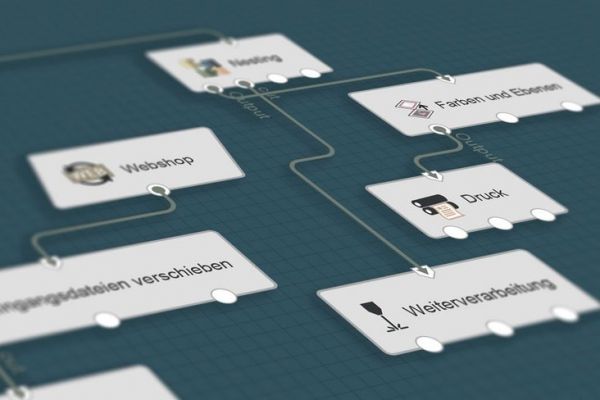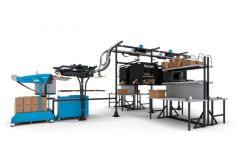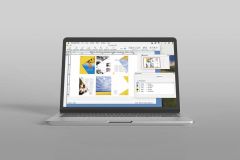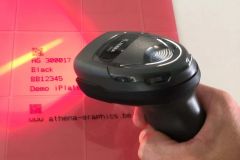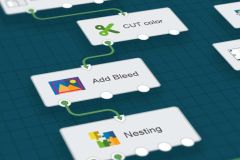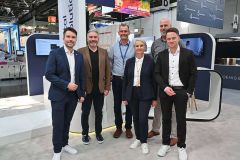In the changing landscape of the graphics industry, printing plants face complex challenges such as rising energy costs, constant price pressure and the need for skilled workers. To stay competitive, companies are turning to workflow automation. And one of the key elements here is the use of middleware. Ania Reibel, OneVision's French-speaking customer manager, explains the role of this little-known but essential component in optimizing production processes in large-format printing.
Middleware, the bridge between all the elements in the graphics chain
An integral part of OneVision's automation solutions, middleware is a computer program that acts as a gateway between various print shop systems, such as web-to-print, ERP, MIS, hotfolders, electronic mailboxes, finishing and printing systems.
Ania Reibel explains: "The middleware intelligently manages structured data from various systems, verifies them, corrects them if necessary and optimizes them for production. The middleware then transfers the prepared print file to the appropriate press, and the optimized cut files to the cutting systems. With another middleware, purchase orders or shipping labels can also be generated for logistics and dispatch."
Without this connectivity, the implementation of digitalized processes is doomed to failure. For example, the launch of an online store may increase the number of incoming orders. But it will be necessary for all other production segments to be able to handle this new influx of orders.
Middleware for customized, optimized automation
Gold "the automation functions offered by a machine manufacturer with its software are not open to other components in the graphics chain. Middleware, on the other hand, enables vendor-independent integration" says Ania Reibel.
This specialization contributes to a more efficient use of company resources. For example, the RIP will no longer be overloaded with oversized files, and printing and finishing machines are optimally utilized.
Three concrete examples of the use of middleware in large format
Wide-format printers, in particular, benefit from these systems with OneVision's Wide Format Automation Suite. Although the applications and jobs are extremely varied, it is entirely possible to automate them. "The choice of middleware will have to turn towards the most flexible and dynamic inter-software possible, and the advantages of these solutions will pay off in particular."
Ania Reibel cites two examples of feedback from various areas of large-format printing and middleware installation. She adds an example from label printing.
Aura Brand Solutions, a UK company specializing in very large format printing such as train wraps, works with very large files. The use of OneVision's Wide Format Automation Suite and its middleware enabled them to prepare print files up to 80% faster .
At Kleinhempel, a German large-format printer whose main activity is the production of signage and building banners, before implementing the OneVision solution, 90% of staff time was spent on repetitive tasks, particularly in prepress.
Today, middleware has considerably reduced these routine operations . The verification, optimization and preparation of oversized files, their transfer to production machines and the creation of shipping labels are now fully automated.
As for Siepro, the German digital printing company has enjoyed impressive growth. In 2017, the print shop was using two large-format roll-to-roll presses for label production. Since then, the fleet has grown to 18 printing and 11 die-cutting systems. Middleware has made a major contribution to this growth. Siepro uses them to automate the entire production process, from file entry and preparation to nesting, printing and label finishing .
Middleware, the key to adaptability
"Middleware is the key to the adaptability and intelligence of automated production workflows. Their proper use enables printers to focus on innovation, quality and growth, securing their place in a competitive and constantly evolving market." concludes Ania Reibel.
